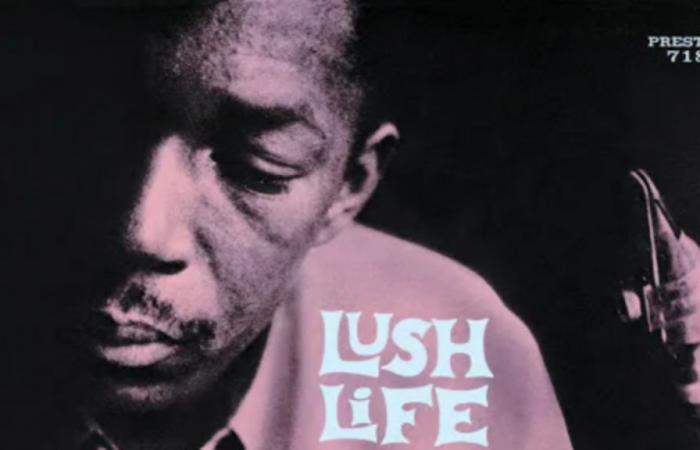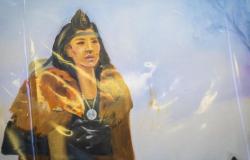Jazz Radio pays tribute to these “little hands” from the shadows, who helped the great jazz icons to reach heights
And if, through their talent and charisma, certain personalities have managed to rise to the highest summits, others, more reserved, preferred to help them in their ascent. So today on Jazz Radio, we pay tribute to these shadowy personalities who, despite their discretion, contributed to the greatness of the greatest stars of jazz.
Producer Alfred Lion
Its name may not mean anything to you, and yet, Alfred Lion played a crucial role in the rise of modern jazz. It’s very simple: he is the co-founder of one of the most prolific jazz labels, Blue Note Records. Judge instead: Miles Davis, Herbie Hancock, Dexter Gordon, Johnny Griffinn, Bud Powell or even Wayne Shorter have, at one time or another, collaborated with the one who will devote himself entirely to his passion for African American music.
Under his leadership, Blue Note has become an exceptional labelrenowned for its demands and high standards, with a production of more than 900 recordings. Fallen in love with jazz since his childhoodAlfred Lion was recognized by his peers, particularly for his integrity: he valued his artists, giving them great freedom of expression, basing his thoughts more on artistic merit than on the lure of profit.
“Alfred Lion was one of the most outstanding examples of integrity in the world of music. […] Everything he did was because of his faith in music.” – Leonard Feather, jazz critic for The Times between 1960 and 1980
Disappeared on February 2, 1987, Alfred Lion shaped the history of jazzand its international popularity.
Producer and composer Teo Macero
The name of Teo Macera is associated with a jazz genius, well known to the general public: Miles Davis. While working for the label Columbia RecordsTeo Macero was best known for producing some of Miles’ most innovative albums, such as “Kind of Blue“, “In a Silent Way“or again”Bitches Brew“. More his great specialty is that he loved to “tinker” with his audio montages, cutting, pasting, and rearranging his raw recordings to create a unique work.
Thanks to Teo Macerothe door has opened on a new genre, which subtly combines different styles between jazz, rock and experimental music, and which will open the way for many artists to express their art: jazz fusion.
The relationship between Macero and Davis was marked by creative collaboration, where Macero often played the role of a sound architect, transforming Davis’s ideas into something concrete. Even if he remained in the shadows, Macero was a pillar in the creation of some of the most important jazz albums.
Proctor Norman Granz
And Norman Granz is known for his role as producer and impresariohe is also for having forever changed the history of jazz, by involving himself body and soul in racial equality. Founder of the label Verve Recordsbut also creator of very popular concerts of Jazz at the Philharmonic, Norman was very keen to bring together as many white and black artists on stageat a time when racial segregation raged across the United States. Camped on its positions, Granz refused to perform in venues that separated spectators based on skin color. He was also very demanding about reception conditions, whether for the artists on stage or for the public.
Norman Granz was able to collaborate with many artists, including Ella Fitzgerald, Dizzy Gillespieor even Charlie Parker. And if the producer participated in the production of iconic masterpieces in the history of jazz, his activism played a fundamental role in the fight for civil rights in music.
Photographer and producer Esmond Edwards
Known as much as a producer as a photographer, Esmond Edwards left his mark on jazz with his double hat. Producer for label Prestige Records, Esmond had the opportunity to accompany “watches“jazzas John Coltrane, Sony Rollins, ou encore Eric Dolphy. Under his supervision, there were many groundbreaking recordings, which forever shaped the evolution of avant-garde jazz and hard bop. And it is undoubtedly thanks to the trust he placed in his artists, giving them rare creative freedom, that he was able to work on emblematic pieces.
Besides this, Esmond Edwards had a keen eye and a certain talent for capturing sublime portraitsrevealing the artists in their best light. Under his supervision, artists like Miles Davis, John Coltrane or even Charles Mingus took the hiatus, with shots often being used as album covers. Between artistic vision and (great) musical sensitivity, Esmond Edwards was an influential figure in the fieldboth in his work as a producer and in his aesthetic.
Sound engineer Rudy Van Gelder
Another name inseparable from Blue Note Records: that of the famous sound engineer Rudy Van Gelder. If the artist has also collaborated with Prestige and Impulse!, Rudy Van Gelder is behind many iconic albums, such as those of John Coltrane, Miles Davis, Horace Silver or even Thelonious Monk. Located in Englewood Cliffs, his studio, which looks like a modern chalet-cathedral, where true jazz icons have passed, has become a true sanctuary.
Famous for his approach when recording, Rudy Van Gelder used cutting-edge methods to bring his recordings to life, producing clear, powerful sound. A sound so recognizable that it even had its own name: “le son Van Gelder“. His work defined the sound of jazz in the 1950s and 1960s: thanks to him, albums like “A Love Supreme” de Coltrane or “Maiden Voyage” by Herbie Hancock have become timeless masterpieces. Even today, his influence on jazz is immense, and in 2009, he was named Jazz Master, the highest American honor in the field.






